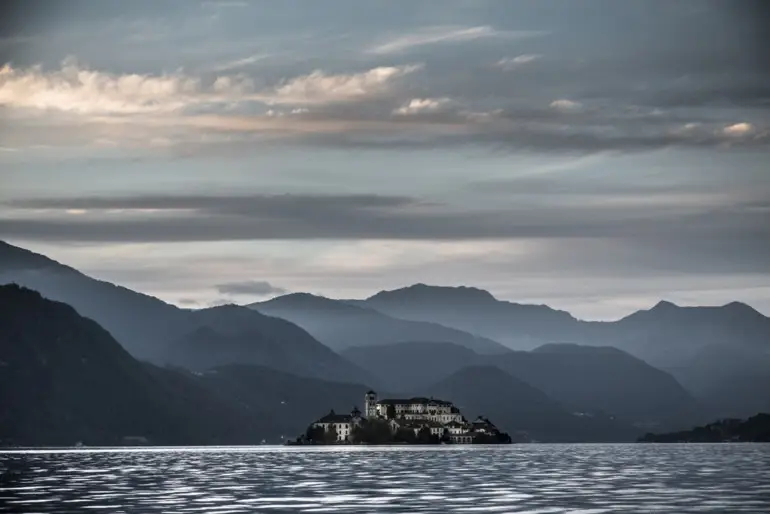Lake Orta has a new design destination and a few other secrets.
LEAVING VENICE, watching its familiar Andrea Palladio domes disappear into the morning fog, can be saddening, but I am elated because I am on my way to the western shore of Lake Orta, where I have never been. My destination is Pella, a little-known Alpine valley village of a few hundred people about an hour and a half northwest of Milan, close to Italy’s border with Switzerland. Until recently this forgotten corner of the Piedmont region has been suspended in time, perhaps because modern roadways and railways have for more than a century diverted travelers and tourists to the larger and more popular lakes Como and Garda. Just east of Orta, another rival is Lake Maggiore, with attractive small towns such as Arona and Verbania, large resort towns, and many private villas on its shores.
But Milanese cognoscenti favor long, narrow Lake Orta over the larger lakes. It is quieter and its south-central island, inhabited by nuns, is a beautiful beacon of times past. Being in the shadows has been fortuitous for small medieval settlements such as Pella that took root around its shores. A slower pace of life allows stories to be told like fables, richly operatic sagas of aristocratic feudal families who once ruled the region and vied for papacies and whose fates were often entwined with those of their peasant neighbors. Absentee former nobles still own unproductive swaths of the area, but it is the skilled descendants of the peasants who live in and preserve this unchanged bucolic setting. They are traditional wood, stone and metal crafters and makers of critical components for some of the country’s most noted automotive and home furnishings brands.
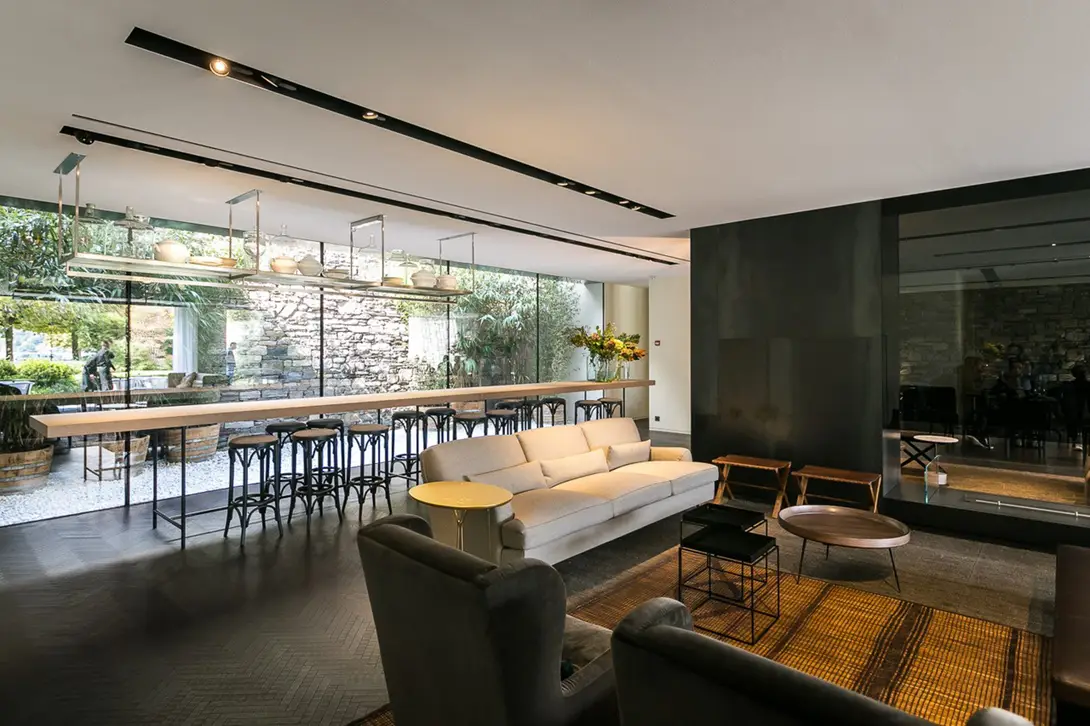
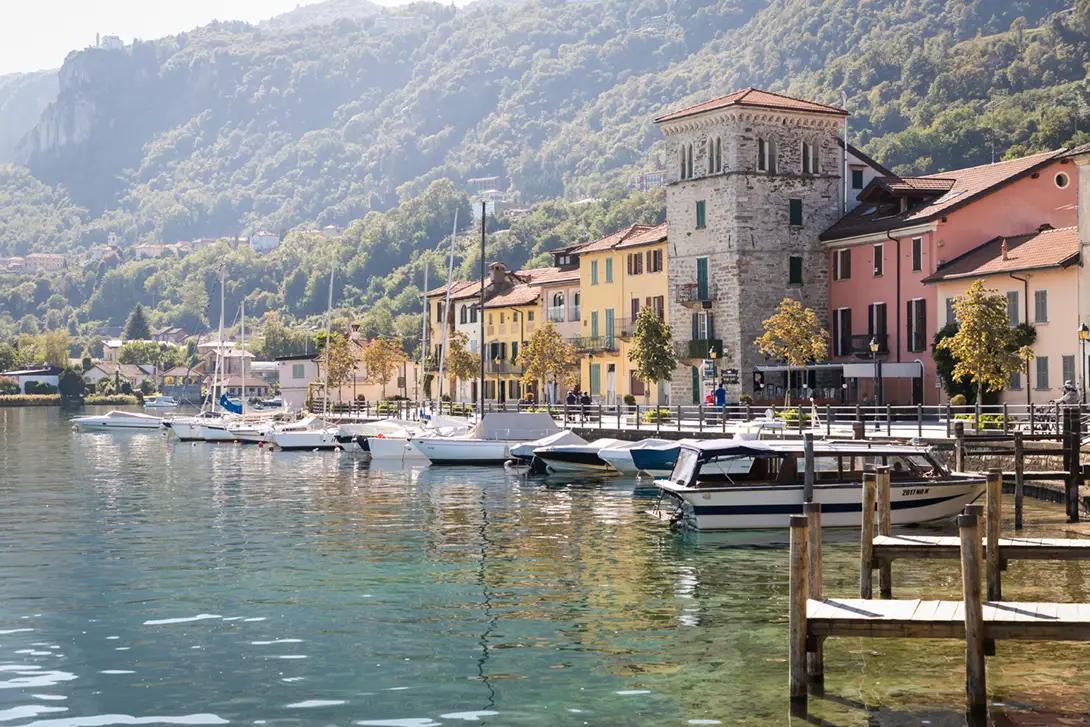
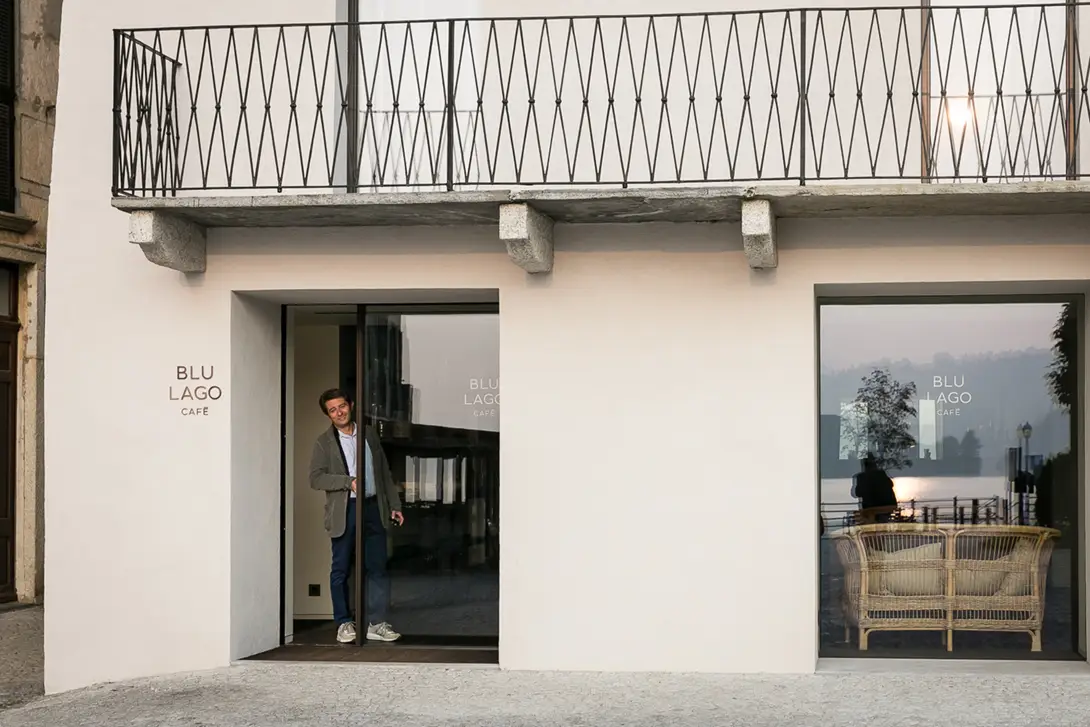
Along those old/new lines, the ultramodern three-story Casa Fantini/Lake Time hotel in Pella, where I am staying, stands in sharp contrast with the town’s simple 19th-century tile-roofed stone and white stucco buildings grouped tightly against a backdrop of wooded slopes. One former pensione that is connected to the new hotel houses its Blu Lago Cafe and a couple of suites above it. Another red stucco building alongside the public square in front of the cafe holds a modest chapel where pre- recorded hymnal music — another sign of the changing times — plays all day long.
My presence in this evocative idyll is no accident. I am here to meet Daniela Fantini, the 58-year-old creator of the new hotel and also the CEO of Fantini Rubinetti, the faucet and water-fixtures company that her father Giovanni and his brother Ersilio founded in 1946. Their love of craftsmanship propelled them to the top of their trade, and the Calibro faucet they created in 1978, with designers Davide Mercatali and Paolo Pedrizzetti, garnered awards, a place in the MoMA’s permanent collection and enviable commercial success. Like her father and uncle, Daniela collaborated with designers, with positive results. Now, in her hotel, she is gathering the seven recent winners of the third annual Fantini Design Awards, for North American designers who use the company’s luxury offerings for kitchen and bath, as well as the competition’s judges, of whom I was one.
Daniela wanted us to experience the three-acre waterfront enclave where she has flourished most of her life. It contains the family’s historic factory and showroom, as well as her sleek 11-room five-star hotel, which opened in 2017 and is the first of its kind around Lake Orta.
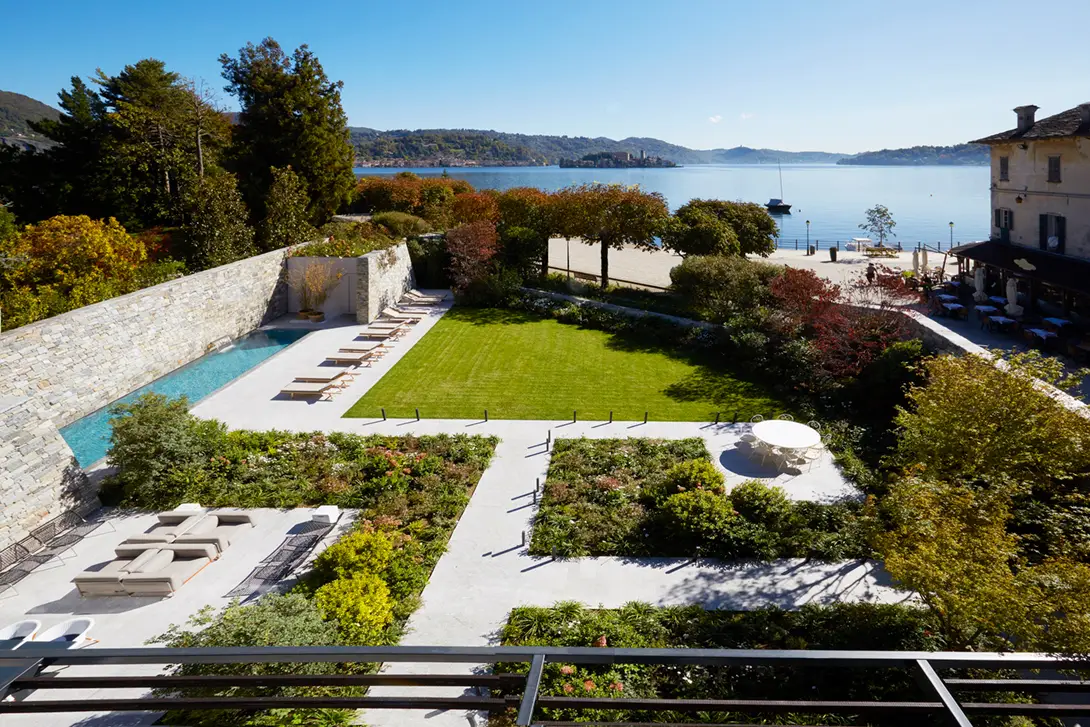
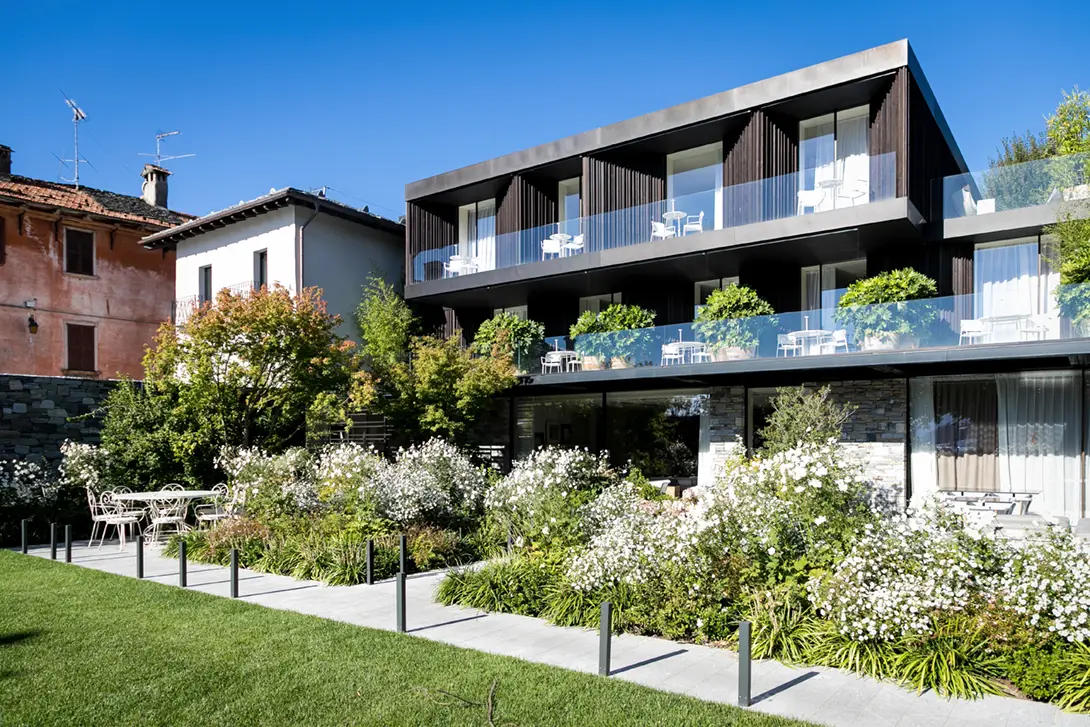
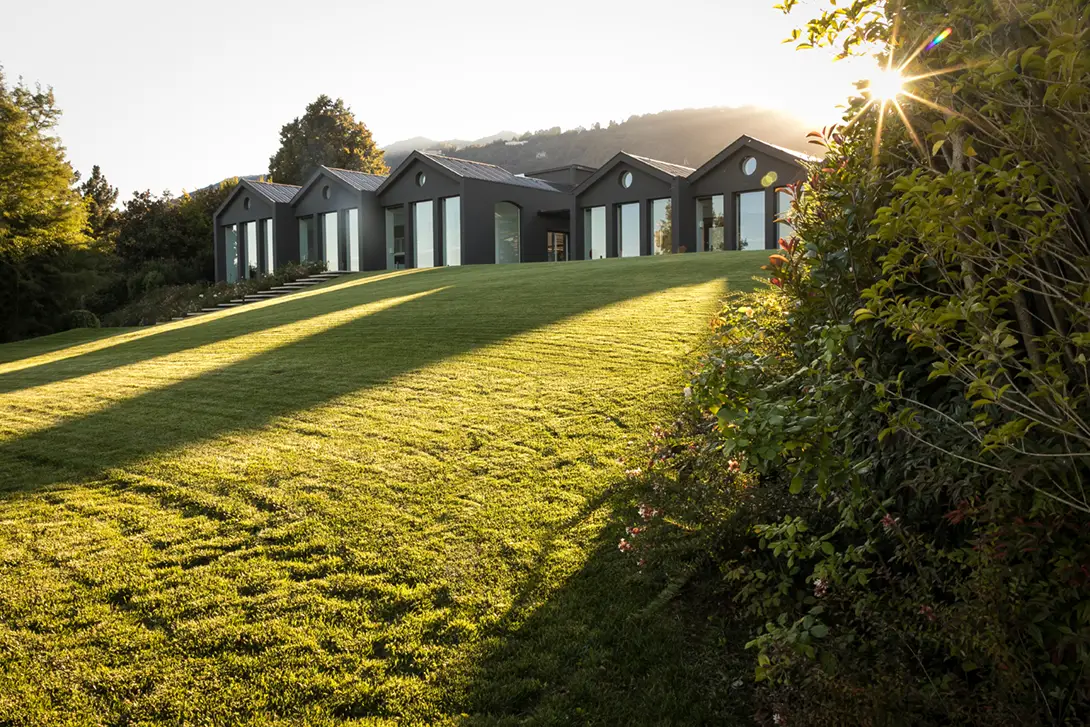
The home she shares with her mother is also on the property, sitting between these old and new buildings, separated from them only by new stone walls. One day a few years ago as she was waiting to return home from the east side of the lake by boat, Daniela realized that despite their excellent location, unlike her home, Fantini’s old factories were closed off from water views and the splendor at their door.
“Often, when you are lucky enough to be surrounded by such beauty, you simply don’t notice it,” Daniela explains with a rueful smile. She dreamed of change, and it became a kind of “vocation,” she says.
Milanese designer Piero Lissoni, who has helped Daniela develop Fantini’s brand image for nearly two decades, planned the new look for the factory and showroom, which are now both clad in black U glass and made to look like individual cabins with large view windows. Lissoni also designed Fantini’s showroom in Milan, along with this new 9,000-square-foot rectilinear hotel structure, with some matching elements.
The dark buildings blend into their backgrounds and their uniformly white interiors softly bounce light pouring in through enlarged windows. In the hotel and showroom, stylish bathrooms incorporate Fantini’s luxury pieces by the likes of Japanese designer Naoto Fukasawa, both to reflect the refined yet casual quality of life around the lake and so that “our guests and visitors can understand and enjoy Fantini firsthand,” Daniela says.
Comfort in every sense of the word was her goal. Perhaps that’s why in lieu of a traditional lobby on the hotel’s ground floor, public spaces are designed like a living room. Sofas here match the ones Daniela uses at home. In the nine guest rooms stacked on the floors above, materials and fabrics are as close to natural as possible, white-painted salvaged doors and windows form the beds’ headboards, and walls of blue tinted or back-painted glass partition off closets and bathrooms to “evoke the land- scape and the water,” Lissoni says. The building facade, with large windows and covered balconies each big enough for a table and two chairs, is a checkerboard of clear glass and vertical cladding made of charcoal-black Accoya pine wood slats treated with a vinegar-based preservative. The same Accoya material appears in grid form for the push-button sliding gate to a small entry garden, which borders a lawn and lap pool that stretch out toward the lake.
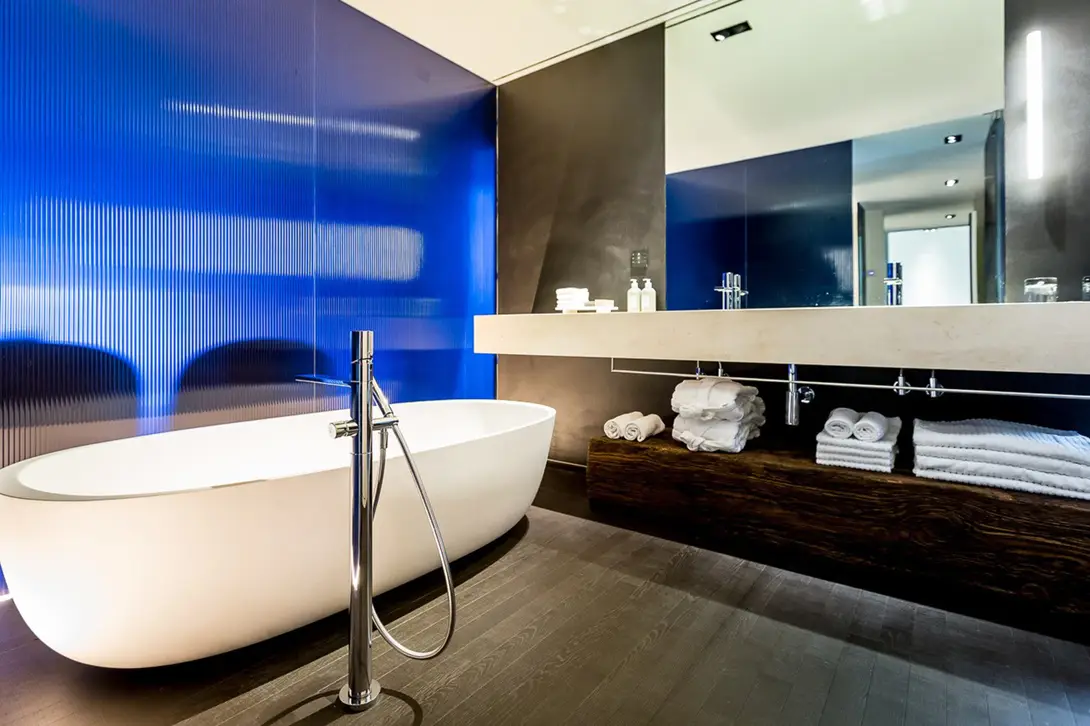
Herbs, white Mediterranean flowers and green hydrangeas growing outside are frequently cut to grace the tables in the open-plan restaurant, where the chef typically provides refined versions of what Daniela describes as local “peasant food”: delicate garbanzo soup; finely chopped raw and roasted seasonal artichoke salad; red-wine-marinated braised ox with polenta; smooth panna cotta, tiramisu and sometimes even the former pensione’s coveted apple cake, whose recipe Daniela inherited, all served with Nebbiolo, Barbera or other regional varietal wines.
From the living room, “we see and we feel the water; it’s a sort of ‘genius loci’ — an ideal location where the presence of water is the premise for creativity,” Daniela says, gesturing toward the lake.
In the lake’s center is San Giulio Island, with a 12th-century basilica and bell tower and adjacent nunnery. We travel there the next day by boat. An effigy of the patron saint Giulio — who rid the island of mythical monsters, we are told — is displayed on a dais in one crypt, and the basilica’s elaborately decorated murals and frescoes, some of which date back to the 1400s, are impressive reminders of the region’s historical importance. Hillside dwellings for a dozen inhabitants, besides the Benedictine nuns who live here year-round, dot the island. Vine- screened walkways for the cloistered nuns and small, well-tended gardens liven the bell tower and basilica structures.
On the lake’s southeast shore, opposite Pella, the town of Orta San Giulio has pedestrianized squares and steep, narrow cobbled paths lined with big houses that reflect a time when it was a wealthy port where traders thronged the harbor. Several market stalls and medieval buildings decorated with faded frescoes still surround Piazza Motta, the main square where shiploads of goods were sold.
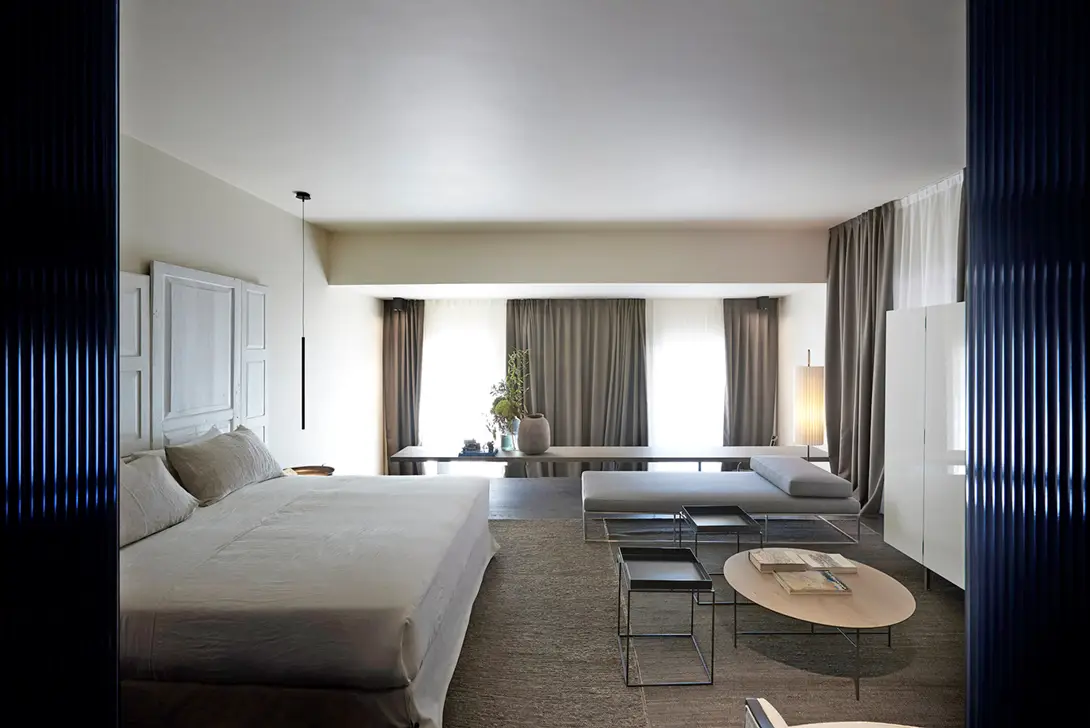
On another day we visit the impressive resort town of Stresa on nearby Lake Maggiore, and Isola Bella, a palatial island enclave owned by the influential Borromeo family, to fully grasp the Milanese habit of escaping to these lakes as a means to slow down.
“Casa Fantini/Lake Time [hotel] also adopts the concept of a slow time to be devoted to ourselves to enjoy the beauty of the place,” Daniela says. “It is the realization of my personal dream, my passion for this region and my love of hospitality.”
And if Pella and Lake Orta have been a whispered secret until now, with her hotel Daniela has finally let us all in on it.
This article originally appeared in SPACES’s print edition under the headline: “A Personal Dream”.
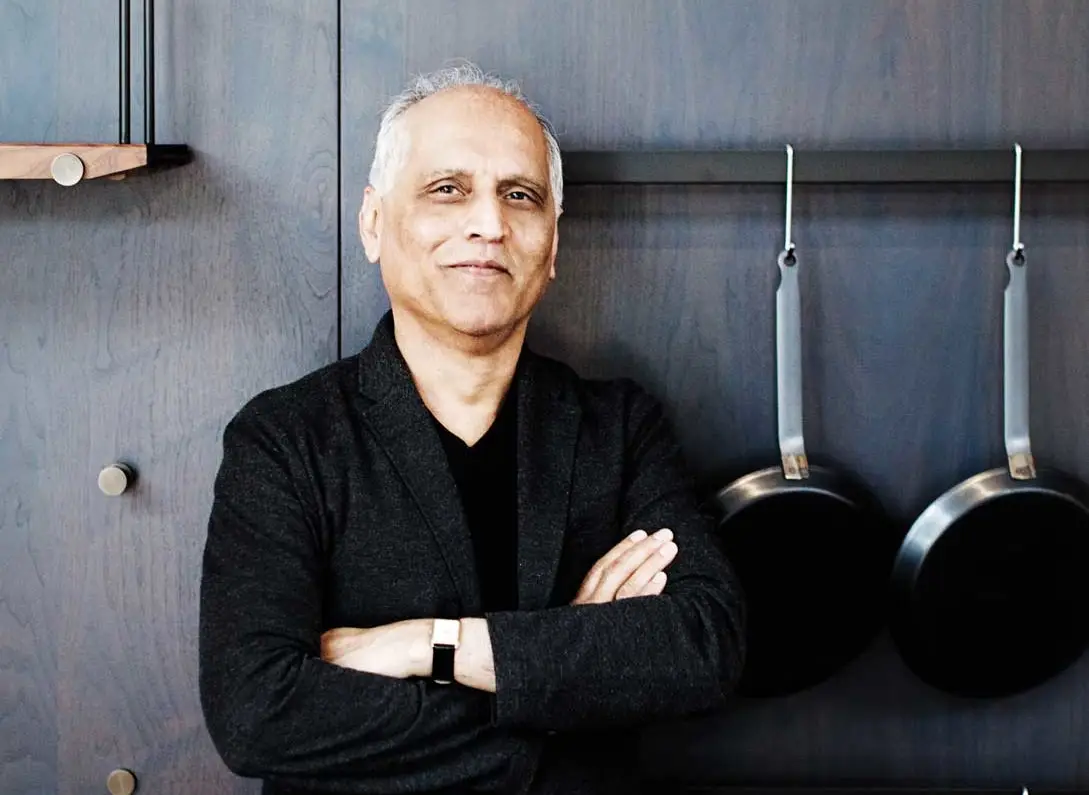
Former Editor-in-chief of SPACES, Zahid Sardar, brings an extensive range of design interests and keen knowledge of Bay Area design culture. He is a San Francisco editor, curator and author specializing in global architecture, interiors, landscape and industrial design. His work has appeared in numerous design publications as well as the San Francisco Chronicle for which he served as an influential design editor for 22 years. Sardar serves on the San Francisco Decorator Showcase design advisory board.
